Gerrit Staal is currently in Indonesia. He is making a case for horticultural development in the Asian country. For this purpose, he has set up Initiative Greenhouse Horticulture Indonesia. After the necessary market research, he is now going public with it, having also given the first training and advice during his visit to Java.
"Jakarta, the capital, has grown into a very big city, with huge buildings with the accompanying Indonesian traffic chaos. Almost like New York if you ask me." Gerrit already noticed the overdue quality of various tomatoes and other vegetables used in warungs, restaurants, and foodchains in Jakarta. "It's a pity that restaurants have to serve this to their customers. They often don't know any better."
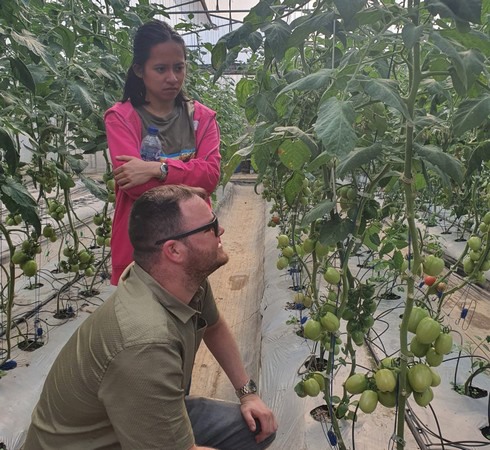
Gerrit talks in a small tomato greenhouse at Al Ittifaq in Indonesia.
The Al Ittifaq nursery Gerrit visited was four-and-a-half hours away by car from Jakarta. At the nursery, Gerrit and his Indonesian wife, who accompanied him during his visit, were received very hospitably. "I had been looking forward to the visit for several weeks, purely to see how their business activities differ from ours. The tour allowed me to clearly see where production can be improved, how product quality can be improved, and efficiency gains can be made so that growers are stronger in the market."
"All the knowledge and experience I gained in the Netherlands over the past few years, I have put to use here," he continued. Gerrit worked in the greenhouse as a schoolboy and later professionally with a tomato grower, working in greenhouse construction and in the fresh produce trade. In this way, he got to know a large chunk of the horticultural chain up close. The knowledge he now shares in Indonesia, where the people he spoke to eagerly learn from him. "They really see me as an expert. I'm not really that, of course, but I do have a lot of valuable knowledge from the Netherlands that I can transfer to them."
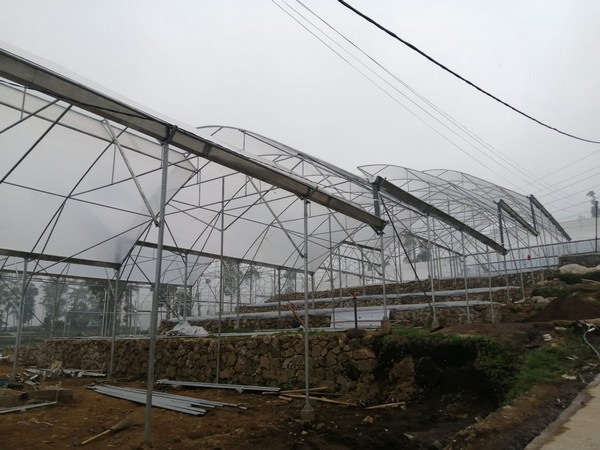
Greenhouse in tiers on a slope under construction at one of the growers of cooperative Al Ittifaq. Water for cultivation often comes via canals from above the mountain. Lacking purification and filtration, the water quality is not optimal.
More greenhouses
During his visit to the growers' cooperative Al Ittifaq, which has an Islamic school where students learn agricultural livelihood and are trained as growers, Gerrit gave presentations. "The growers in the cooperative would like to grow more with greenhouses," he said. Three of the 12 growers already have greenhouses in place. Certainly not high-tech glass greenhouses, but foil greenhouses that bring a way for the growers to protect their crops.
"Indonesia has a rich food culture, but in terms of vegetables and growing in greenhouses in combination with good varieties, there is still a lot to be gained." Gerrit looks at it from the perspective of a Westlander. "And so my bar is high," he realizes. "But the growers here also want to move forward." One of the growers in the cooperative is also expanding his greenhouse. Gerrit saw for the first time how a greenhouse was being built on a slope. "It is a foil greenhouse with sawtooth ventilation. The greenhouse literally climbs up against a mountain."
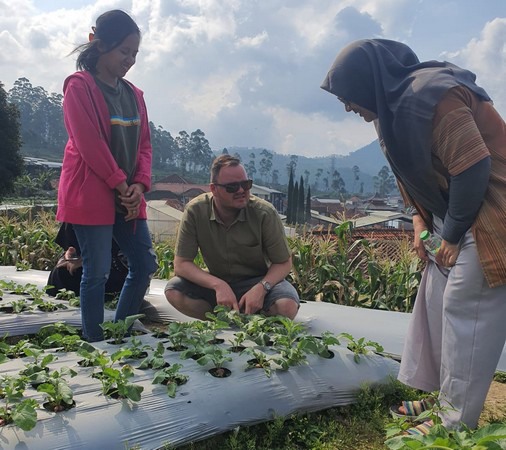
Gerrit explains radish cultivation to the grower in the photo and indicates improvements. They grow radishes in these soil bags in Indonesia. Several crops are grown this way, with holes in soil plastic. It prevents grass growth. The water reaches the crop via drip hoses, but a lot of water is nevertheless still lost in the soil. There is also a lot of product wastage.
Improvements
Growers in Indonesia often grow several crops simultaneously on a plot. "A few focus on just spring onions, for example, but more often, you see a combination of tomatoes, strawberries, carrots, and radishes, for example. Quite unlike in the Netherlands, growers here actually grow many different crops at the same time." Varieties sometimes come from the Netherlands but also from local breeding. "With many different crops at the same time, growers here are very flexible in their ability to respond to supply and demand. But it also happens that the grower leaves his crop and does not harvest simply because prices are bad."
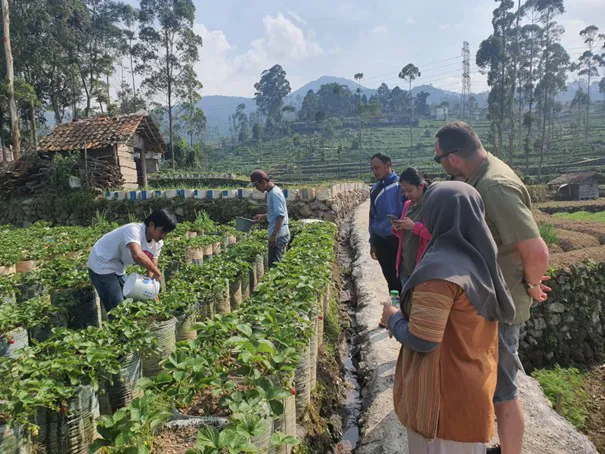
Gerrit is updated on how they grow strawberries in Indonesia. He sees opportunities, despite the higher cost, for growers to switch to growing on irrigation via a gutter system under arch plastic combined with a water management system. "That will be progress," he says.
Growers of the future
As in the Netherlands, Gerrit noticed concerns about the future of horticulture, as younger generations no longer want to become growers. "It is hard work and is known as a profession that is not always well paid in Indonesia, although I also saw that being a grower in Bandung can earn well by local standards. Nevertheless, young people are increasingly looking to the city in the hope of a better life."
At the same time, the students from the agricultural school to whom Gerrit also had the opportunity to give a presentation were very enthusiastic about horticulture. "How cool would it be if those students later became owners of a cultivation company with a greenhouse?" Gerrit dreams aloud. The students were given a presentation on what is possible if they later grow in greenhouses. Evi, the director of the growers' cooperative, made sure everything was translated well. "Even though the students were still young, they asked sharp questions such as about growing mediums, growing systems, and cooling technology," she said.
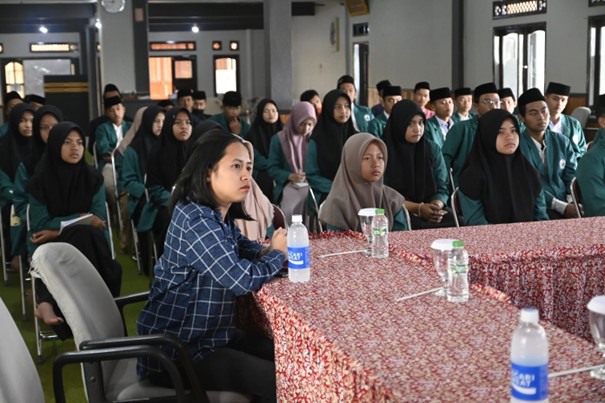
Students listened intently to Gerrit's presentation on what Dutch horticulture can do for food production in Indonesia. "After the presentation, the students were all keen to take a photo with me, and I signed a certificate of participation."
Gerrit also explained to the growers what technological applications there are in greenhouses, what Dutch horticulture and climate technology can do for them, and how they can use it to increase the production of their crop and deliver better quality to their customers, supermarkets, restaurants, and other segments.
"I also explained to them four competitive business strategies used in horticulture. Both the cultivation techniques, applicable technologies, strategies, and areas for improvement that I presented to the growers of the cooperative were taken very highly. Many notes were taken. We talked together after the presentation about local challenges, what can be improved, and what steps can be taken. I was honored to exchange views with them and that they see me as a horticulture expert."
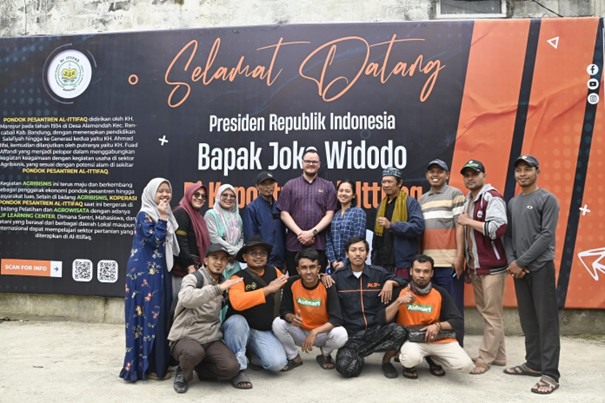
Several growers from the cooperative pictured with Gerrit and his wife.
New horticultural projects
In the same week, just before Gerrit visited the cooperative, the president of Indonesia also visited the cooperative. "I found out about that through social media. He saw the cooperative as a cultivation community that can serve as an example for others in the country." The president is keen to modernize horticulture in Indonesia. Horticultural companies from Taiwan, among others, are therefore targeting the country. "I hear stories about greenhouse growers from Taiwan in Indonesia but haven't seen much of them myself. If you ask me, there are also opportunities for Dutch companies. We have so much knowledge."
In Gerrit's view, it is important that new horticultural projects emerge close to large cities and villages in Indonesia. "So that there is high-quality, safely produced food, young people can become gardeners, and there is food security close to big cities. Indonesia is very advanced when it comes to mobile and digital technology. Really much more advanced than the Netherlands. This is evident in Indonesia's cities and digital infrastructure. Modern horticultural projects are just really needed and the first steps should be taken to embrace and deploy mid-tech and high-tech greenhouse horticulture for the benefit of food security, higher product quality and safe food supply."
To the Westlander's surprise, horticultural ties between the Netherlands and Indonesia are actually quite limited. "Those ties should become much stronger," he says. With Initiative Greenhouse Horticulture Indonesia, he wants to contribute to that. "My visit has shown it is important for the people. Also, for the awareness of this initiative and building my network." Gerrit hopes to visit Indonesia more often soon. This first visit on behalf of the self-organized horticultural initiative was quite moreish.
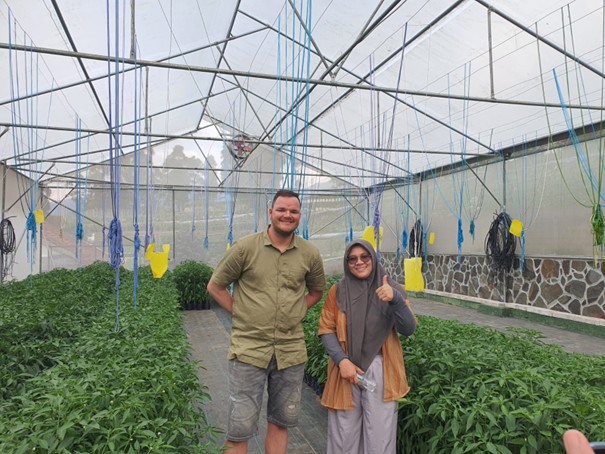
Gerrit, together with Evi, CEO of grower cooperative Al-Ittifaq in Bandung Java.
For more information:
Gerrit Staal
Indonesia.gerrit@gmail.com
